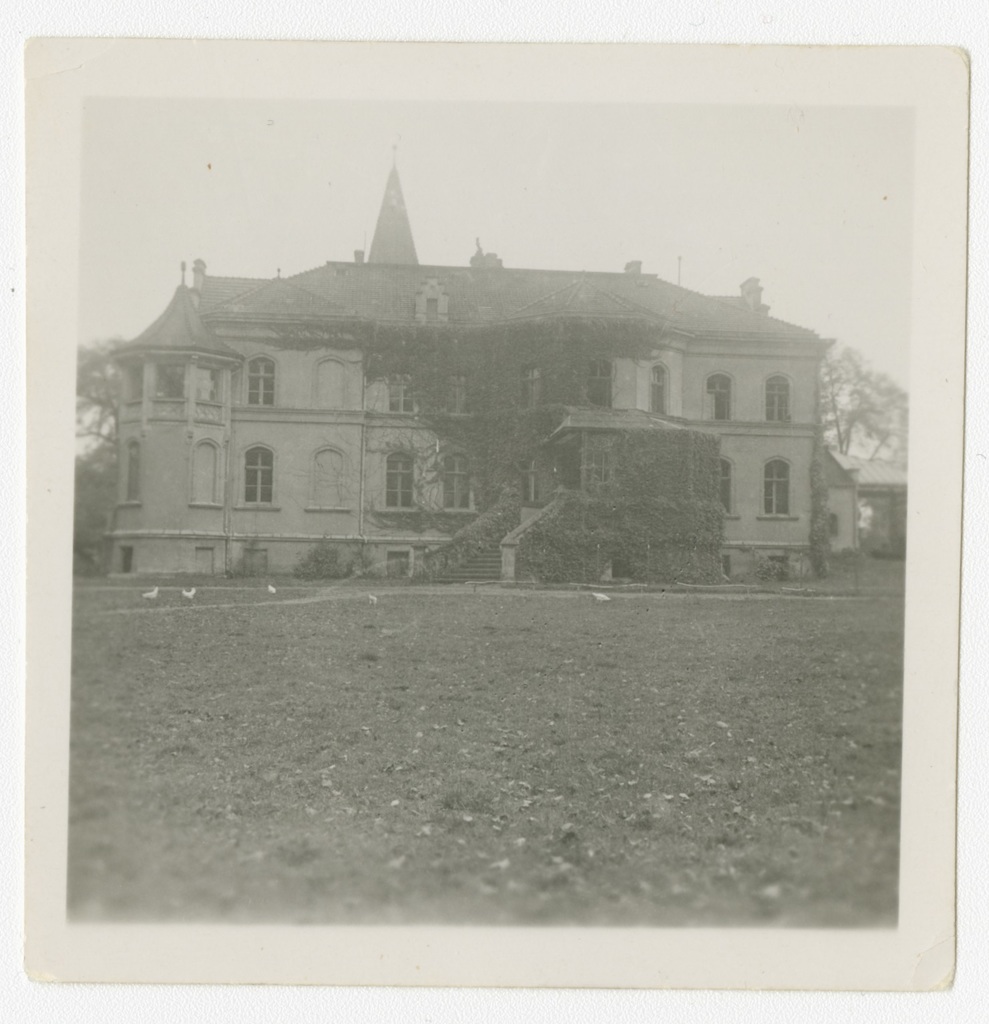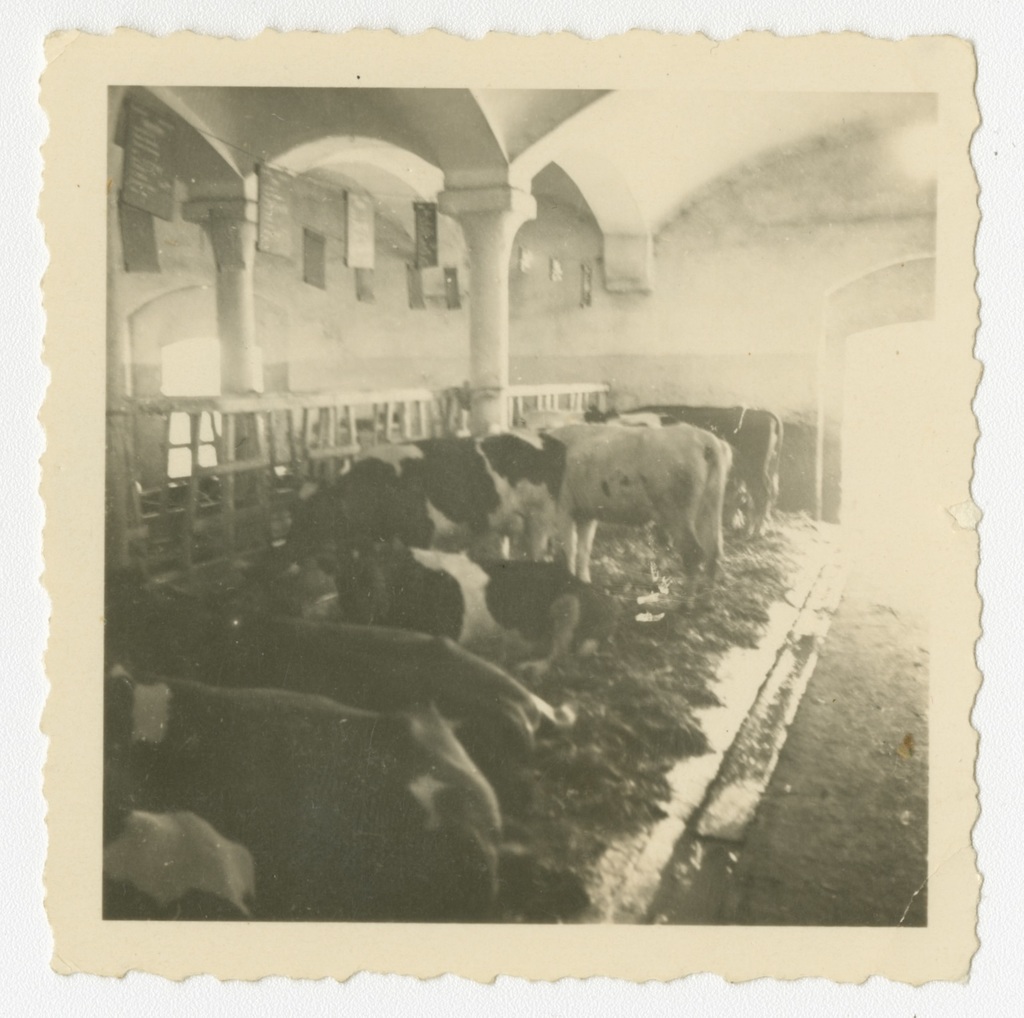- Type of Hakhshara
- vocational retraining
- Founded
- 1935/1936
- Opened
- May 1936
- Closed
- August 31, 1941
- Operating Area
-
207 hectare550 acres of farmland, 160 acres of mixed forest, 75 acres of meadows and pastures, 10 acres of gardens
- Areas of Training Offered
-
horticulture, home economics, woodworking, agriculture, animal husbandrygardening (fruits and vegetables); livestock production (cattle, pigs and goats); farming (grain, potatoes and beets); poultry farming (chickens); dairy production; carpentry; blacksmithing; forestry; home economics (sewing, cooking and baking)
- Description
-
Already before the end of 1935 it was decided to found a non-Zionist emigration training center for German-Jewish youths, which would offer an alternative to the Hakhsharot. On January 16, 1936, the inaugural assembly was held at the Reich Representation of German Jews (Reichsvertretung der Juden in Deutschland or RV). Representatives from all of the major Jewish organizations in Germany were included on the board of trustees and the working committee, with the exception of the Zionist Federation of Germany (Zionistischen Vereinigung für Deutschland or ZVfD). Besides the RV, it was mainly the Central Association of German Citizens of Jewish Faith (Centralverein deutscher Staatsbürger jüdischen Glaubens or CV), the Reich Association of Jewish Front-Line Soldiers (Reichsbund jüdischer Frontsoldaten or RjF) and the Association of German-Jewish Youth (Bund deutsch-jüdischer Jugend or BdjJ) who were crucial in establishing the training farm estate. Curt Bondy, a highly qualified psychologist who had made a name for himself in the Weimar Republic with his efforts to reform the juvenile penal system and who himself was involved in youth movements and the progressive education reform movement, was entrusted with the management of the estate and the intellectual, spiritual and character-building education of the young participants. The plan was to train up to 125 young people between the ages of 15 and 23 in agriculture, horticulture and the trades, or home economics for the female participants. The actual number of participants, however, varied greatly over the years. At the end of 1936, for example, just 70 trainees were living on the farm; by the summer of 1937, their number had grown to around 100. The intended goal was a communal settlement overseas, and therefore, establishing a long-term commitment to agriculture in the trainees.
After a long search, and for a lack of better alternatives, the RV leased the Gross-Breesen estate in the former Lower Silesia, around 30 kilometers (19 miles) north of Breslau. It was owned by the Polish-Jewish Rohr family, who had fled to Poland in 1933. The estate had already been used as a Hakhshara center by HeHalutz in 1930/31. The first trainees arrived at the estate training farm in early May 1936. The estate included a stately mansion, called the “castle” (Schloss), which housed the trainees and staff. It was surrounded by a large park, a spacious farm with stables, barns and living quarters for non-Jewish farm workers (Instwohnungen), gardens and a secluded hunting lodge. Beyond that were the fields and forest. Despite initial concerns that the estate was too large and in poor general condition, the farming was so profitable that from June 1938, no more financial assistance was necessary.
Practical training in agriculture and horticulture was supplemented by theoretical lessons in animal husbandry, fertilization or crop rotation. Field work was reserved for the young men outside of the harvest. The instruction for male trainees also included training in carpentry, forestry and animal husbandry (cattle, pigs and goats). Young women were mainly trained in home economics, which included chicken farming. Work in the gardens was also mainly the responsibility of the female participants. Working in the cowshed, however, was mandatory for all trainees. Already in the first years of the training farm there were discussions about this unequal distribution of work, as well as the role of women in the planned settlement overseas. This may also be one reason why the intended goal of having an equal number of male and female trainees was never reached. While the majority of the younger trainees had never had any experience with everyday farm work, the older trainees were familiar with it through previous experience on farms or on other estate training centers and supported the teaching staff in both practical and theoretical training.
The original training program also provided for the cultural and intellectual education of the participants so that they would not become “too countrified”. In addition to lessons in foreign languages, math and biology, this also included introductory courses in classical music and literature--the canon of the educated middle class. To this end, there were musical evenings, discussions of current and world political events and the daily papers were available in the common area. Bondy’s educational program also included weekly lessons in life skills, where questions of (everyday) co-existence and moral views were discussed and shared.
Further central aspects of the educational program were character-building and a consciously “Jewish education”, with these being closely linked together. It was hoped that a mindful relationship to Judaism and the Jewish community could serve to empower the young people, who generally had little to no Jewish religious background, in a threatening time of upheaval and change. Starting in 1937, external teachers temporarily came to the estate to teach Hebrew. Older interns and Ruth Scheier took on the task of organizing Shabbat and important Jewish holidays. Despite these efforts, it was not possible to establish a firm “feeling of Jewish community” in Gross-Breesen.
The initial emigration plan envisioned the Gross-Breesen trainees establishing a communal settlement in South America. In June 1938, six people from Gross-Breesen traveled to Argentina to settle in Avigdor, a colony founded by the Jewish Colonization Association. The hope that other trainees might follow these first settlers had been almost completely dashed by the summer of 1938, due to the restrictive immigration policies of the Argentinian government. In the end, only the settlement in Hyde Farmlands, Virginia (USA), where a group of nearly 30 trainees found refuge, lasted for several years (1938–1941).
Like many Haksharot, Gross-Breesen was destroyed in the November Pogrom in 1938. All male trainees over 18, Curt Bondy and the Jewish employees were imprisoned in the Buchenwald concentration camp for several weeks. The younger trainees along with the women and girls remained on the estate, which was temporarily managed by Ruth Hadra, group leader and Bondy’s secretary, and Ruth Scheier. Although the training center was able to continue operating for the time being, the structure and conditions changed dramatically over the course of 1939. Formally under the auspices of the Reich Association of the Jews in Germany, Gross-Breesen was under the control of the Gestapo and the SD, and the Reich Security Main Office, created in September 1939. The pedagogue Walter Bernstein took over the management of the training center as Curt Bondy’s successor. In the summer of 1939, Gross-Breesen was at full capacity. With the start of the war in September 1939, the working hours were expanded and the training, theoretical lessons and free time were massively reduced. Nevertheless, Bernstein and other older trainees did their best to maintain community life. The discussions about religious and secular questions continued, the library was expanded and there were still occasional musical evenings. However, the Nazi’s control became evident as small groups from Gross-Breesen were repeatedly ordered to work on other farm estates or forestry camps. On August 31, 1941 the Gestapo finally ordered the official dissolution of the Gross-Breesen emigrant training estate and its transformation into a forced labor camp. In October 1941, Walter Bernstein was relieved of his position as the director of the former training estate, and, together with his wife and child, assigned to the forestry labor camp Kaisermühl which he was to manage until he was deported to Auschwitz in April 1943, where he was murdered at the end of the year. The management of the forced labor camp in Gross-Breesen was taken over by a Mr. Hildebrandt starting in December 1941, who was renowned for his harassment of the remaining trainees. Food rations were severely reduced and work on Sundays introduced. In October 1942, the last residents were evicted from the “castle”, and they now had to live in extremely cramped quarters in the farmyard. At the beginning of 1943, a Wehrmacht hospital was set up in the “castle”. With the arrival of the first wounded, the remaining 25 trainees were permanently forbidden to enter the “castle”. The last inhabitants of Gross-Breesen were deported to Auschwitz at the end of February 1943.
During the collectivization at the end of the 1940s, the estate became a state-owned agricultural enterprise of the Polish People’s Republic. The current owner bought the property in 1999.

© Privatbesitz Albrecht Weinberg

© Privatbesitz Albrecht Weinberg

© Privatbesitz Albrecht Weinberg
- State of Conservation
-
partially preserved
The estate and surrounding area were subject to extensive renovations and newly designed. Under the name of “Pałac Brzeźno“, there is now a golf and spa hotel in the castle and surrounding buildings.
The castle and the park are now considered cultural heritage landmarks. See: https://www.palacbrzezno.pl/. - Related Organizations
-
Bund deutsch-jüdischer Jugend (associated)
- Related Persons
-
Bondy, Curt Werner (director)Bernstein, Walter (director)Scheier, Erwin (director)Scheier, Ruth (director)
- Sources and Notes
- Harvey P. Newton [Hermann Neustadt], Erinnerungen an das KZ Buchenwald November – Dezember 1938, Leo Baeck Institute Archive (New York), Memoir Collection, ME 986.
- Literature
-
Werner T. Angress: Auswandererlehrgut Gross-Breesen, in: The Leo Baeck Institute Year Book 10 (1965). pp. 168–187. online: <https://doi.org/10.1093/leobaeck/10.1.168>
Werner T. Angress: Generation zwischen Furcht und Hoffnung. Jüdische Jugend im Dritten Reich, Hamburger Beiträge zur Sozial- und Zeitgeschichte. Hamburg: Christians 1985. online: <https://www.zeitgeschichte-hamburg.de/contao/files/fzh/Digitalisate/Werner%20T%20Angress%20Generation%20zwischen%20Furcht%20und%20Hoffnung.pdf>
Werner T. Angress: … immer etwas abseits. Jugenderinnerungen eines jüdischen Berliner 1920–1945. Berlin: Edition Hentrich 2005.
Knut Bergbauer: Pioniere in der Provinz. Hachschara, Alija und jüdische Jugendbewegung in Schlesien, in: Ulrike Pilarczyk; Arne Homann; Ofer Ashkenazi (eds.), Hachschara und Jugend-Alija. Wege jüdischer Jugend nach Palästina 1918-1941, Steinhorster Beiträge zur Geschichte von Schule, Kindheit und Jugend. Gifhorn: Gemeinnützige Bildungs- und Kultur GmbH des Landkreises Gifhorn 2020. pp. 107–133.
Ernst Cramer: Erinnerungen an Buchenwald, in: Wolfgang Benz; Barbara Diestl (eds.), Gericht und Gerechtigkeit. Dachauer Hefte. Studien und Dokumente zur Geschichte der nationalsozialistischen Konzentrationslager, vol. 13. Dachau: Verlag Dachauer Hefte 1997. pp. 135–141.
Ernst Cramer: Ich habe es erlebt. Berlin: Axel Springer-Verlag 2008.
Sheer Ganor: To Farm a Future. The Displaced Youth of Gross-Breesen, in: Bulletin of the GHI Washington, Supplements 15 (2020). pp. 19–40. online: <https://perspectivia.net/receive/pnet_mods_00003552>
Arie Goral-Sternheim: Jeckepotz. Eine deutsch-jüdische Jugend 1914–1933. Hamburg: LIT Verlag 1996.
Wolfgang Hadda: Knapp davongekommen – Von Breslau nach Schanghai und San Francisco. Jüdische Schicksale 1920-1947. Konstanz: Hartung-Gorre 1997.
Wolfgang pp. Matsdorf: No time to grow. The story of the Gross-Breeseners in Australia. Jerusalem 1973.
Rudolf Melitz (ed.): Das ist unser Weg - Junge Juden schildern Umschichtung und Hachscharah. Berlin: Joachim Goldstein Verlag 1937. online: <http://d-nb.info/1032728663>
Alexander Karl Neumeyer: Von einer Generation zur anderen. Lebenserinnerungen, erzählt für meine Enkel, in: Robert Schopflocher; Rainer Traub (eds.), »Wir wollen den Fluch in Segen verwandeln« Drei Generationen der jüdischen Familie Neumeyer. Eine autobiografische Trilogie. Berlin: Metropol 2007. pp. 259–408.
Joseph Walk: The Diary of Günther Marcuse – the Last Days of the Gross-Breesen Training Centre, in: Yad Vashem Studies VIII (1970). pp. 159–181.
Frank Wolff: Der Traum vom deutsch-jüdischen Bauern. Das Auswandererlehrgut Groß-Breesen (1935–1938) und die verspätete Emigrationspolitik des Centralvereins, in: Regina Grundmann; Bernd J. Hartmann; Daniel Siemens (eds.), „Was soll aus uns werden?“ Zur Geschichte des Centralvereins deutscher Staatsbürger jüdischen Glaubens im nationalsozialistischen Deutschland. Berlin: Metropol 2020. pp. 195–237.
Wiebke Zeil: Zwischen landwirtschaftlicher Ausbildung und geistiger Gemeinschaft. Das jüdische Auswandererlehrgut Groß-Breesen „Zwischenwelt im Werden“ – die Etablierung des Lehrgutes, in: Knut Bergbauer et al. (eds.), Jüdische Jugend im Übergang – Jewish youth in transit. Selbstverständnis und Ideen in Zeiten des Wandels, Europäisch-Jüdische Studien - Beiträge. Berlin: De Gruyter 2024. pp. 209–233. online: <https://doi.org/10.1515/9783110774702-008>
Recommended Citation
Wiebke Zeil, Jewish Emigration Training Gross-Breesen, in: Hakhshara as a Place of Remembrance, December 12, 2022. <https://hachschara.juedische-geschichte-online.net/en/site/14> [December 20, 2025].